At a Glance
- A major cargo terminal operator at one of the largest international airports in South America faced rising operational costs due to inefficient asset usage and poor forecasting tools.
- Renoir implemented a data-driven asset management system, resulting in an 18.6% reduction in fleet size through optimised equipment utilisation.
- This case study discusses how Renoir helped the client enhance cargo terminal efficiency, reduce operational costs, and establish a scalable model for long-term resource planning.
Key results
18.6% reduction in fleet size by optimising asset utilisation
4.8% reduction in overall operational expenses at the cargo terminal
5.5% reduction in fuel expenses
Background
The client is a key logistics hub for international trade in South America, managing high volumes of cargo imports and exports. The cargo terminal plays a vital role in maintaining the country’s commercial connectivity.
As a concessionaire-driven operation with long-term growth targets, the client needed to elevate its cargo handling capabilities and cost management practices to remain competitive in the region. With increasing demand volatility and cost pressures, a transformation was essential.
Analysis
Recognising the need for a structured, data-driven, and scalable solution, the client turned to Renoir to help optimise asset usage, they sought Renoir’s expertise due to the operational inefficiency challenges
The analysis phase focused on identifying the operational inefficiencies at the cargo terminal. This phase involved a detailed assessment of assets and workload.
The specific areas analysed included:
- Cargo volume trends: Examining fluctuations in import and export operations across different time slots.
- Equipment utilisation: Assessing the current state of assets such as forklifts, scales, and handling infrastructure.
- Operational bottlenecks: Identifying areas that experience delays and productivity gaps.
- Cost structures: Analysing rental versus acquisition models for optimizing the fleet.
The findings from this analysis highlighted several issues. There was underutilisation of existing assets, resulting in excessive reliance on leased equipment and increased operational costs.
Peak demand fluctuations were not correctly forecasted, resulting in either equipment shortages or idle resources. The lack of a structured tool meant that real-time asset needs were not mapped, resulting in inefficiencies in fleet allocation.
Furthermore, the absence of predictive modelling prevented the proactive alignment of resources with demand trends.
These issues stemmed from disparate asset management practices, unclear demand forecasting, and suboptimal equipment utilisation.
Ready for a change in your organisation?
“The implementation of operational metrics combined with the management of the operational routine made clear the real need for assets, balancing operating expenses.”
-CFO
Project Approach
The transformation strategy was structured around three core initiatives:
Development of a Forecasting & Resource Management Tool: This involved designing a data-driven model specifically to predict demand fluctuations and optimize asset allocation3.
Operational Standardisation and Process Efficiency: This initiative focused on implementing structured guidelines for asset utilization, establishing rental policies, and distributing workloads effectively during peak periods.
Cost Optimisation & Strategic Asset Planning: This involved establishing benchmarks to compare rental versus acquisition costs, ensuring that financial decisions regarding assets were aligned with operational needs.
The overall approach integrated the analysis of historical data, workload forecasting, and equipment tracking. This integration aimed to ensure that resource allocation was directly aligned with operational demand, thereby reducing inefficiencies, optimizing asset investment, and leading to improved cost control and service quality.
The goal was to implement a structured asset optimisation model to enhance decision-making related to equipment acquisition, leasing, and utilisation for peak operational performance and cost efficiency.
“With the developed tools, it was possible to establish parameters for comparison, validation, and decision-making regarding whether to maintain the current asset fleet or lease assets for the operation.”
– Commercial Director
Implementation
The project execution focused on enhancing resource allocation, cost efficiency, and operational resilience. The implementation involved several key steps:
- Resource Forecasting & Asset Management Tool Deployment: An AI-powered tool was developed and deployed. This tool enabled real-time asset tracking and demand forecasting. Historical cargo movement data was integrated to predict requirements during peak hours. The tool provided real-time insights to support strategic decision-making regarding asset acquisition and leasing.
- Operational Process Standardisation: Structured frameworks were implemented for allocating assets like forklifts, balancing the use of both leased and owned equipment. Data-driven policies were established for deploying equipment during peak hours. Key Performance Indicators (KPIs) were created to monitor the efficiency of equipment use and its cost-effectiveness.
- Cost Optimisation & Fleet Strategy: A financial model was developed to compare leasing versus acquisition strategies. Fleet sizing was optimized, leading to a reduced dependency on long-term rentals. A dashboard was implemented to monitor cost-effectiveness and the performance of assets.
- Scalability & Change Management: The new system was aligned with cross-functional teams to ensure its smooth adoption. Training sessions were provided to operational teams on the new framework for asset management. A cycle for continuous improvement was established to support data-driven decision-making.
Results
Through the partnership with Renoir, the client realized substantial operational and financial improvements.
A fleet reduction of operational assets by 18.6%. This substantial reduction in the number of assets used signifies improved efficiency, as it was achieved through optimized equipment utilization and ensuring asset allocation was aligned with demand.
A reduction in fuel expenses for operations by 5.5%. This indicates a direct cost saving related to the operation of equipment.
A total reduction in the operational expenses of the cargo terminal by 4.8%. This represents the overall financial benefit realised from the project, indicating improved cost control in equipment acquisition and leasing decisions.
The new AI-powered forecasting tool empowered the client to make informed, real-time decisions on asset deployment and leasing. Operational bottlenecks that previously disrupted cargo flows were significantly reduced, enabling smoother cargo movement and improved service levels.
The staff involved in the Management Action Teams (MATs) were retrained. This retraining focused on the best techniques to develop the team’s skills in change management, continuous improvement, and commitment to excellence.
*To maintain strict confidentiality, customer-specific details have been consciously omitted.
Implement sustainable change and gain full visibility over your assets, operations, and financial performance.












